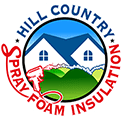Proper insulation is key to maintaining indoor temperatures, reducing energy costs, and improving air quality. It is crucial to the comfort, energy efficiency, and overall health of your home. Yet, many homeowners don’t realize their insulation is underperforming—until the signs become hard to ignore.
Here are the most common signs your home may need better insulation:
HVAC System Running Constantly
If your home’s heating or cooling system seems to run non-stop without achieving the desired temperatures, poor insulation is often responsible. Well-insulated homes require less frequent HVAC cycles to maintain comfortable conditions.
Fluctuating Indoor Temperatures
If you notice significant temperature differences between rooms or floors, this often points to insulation issues. When properly insulated, your home should maintain relatively consistent temperatures throughout. Areas that feel particularly cold in winter or excessively warm in summer may have insufficient insulation in the walls, floors, or ceiling.
Skyrocketing Energy Bills
One of the most telling signs of poor insulation is unexpected high energy costs. If your heating and cooling bills seem excessive compared to similar homes in your area, or if they’ve increased substantially without corresponding changes in usage, inadequate insulation could be the culprit. Proper insulation helps maintain indoor temperatures, requiring less energy from your HVAC system.
Drafts or Cold Spots
Feeling a breeze when all your windows and doors are closed? While some drafts may be due to poor sealing, persistent drafts around windows, doors, electrical outlets, and baseboards often indicate that the insulation within your walls is inadequate. These drafts not only make your home less comfortable but also force your heating and cooling systems to work harder.
Cold Walls, Floors, and Ceilings
Touch your interior walls, floors, and ceilings during cold weather. If they feel unusually cold compared to the ambient room temperature, this suggests heat is escaping through insufficient insulation. Well-insulated surfaces should feel close to room temperature—not noticeably colder.
Moisture Problems or Mold Growth
Proper insulation helps regulate not just temperature but also moisture. On the other hand, poor insulation can lead to condensation buildup, particularly in attics and basements. This moisture creates a perfect environment for mold and mildew to thrive. If you notice musty smells, dampness, or visible mold growth, it’s essential to address insulation issues promptly before they lead to more serious structural or health problems.
Ice Dams on the Roof in Winter
In cold climates, ice dams form when warm air from your home escapes through the attic and melts the snow on your roof. This water then refreezes at the edge, forming a dam that can cause significant damage to your roof and gutters. Proper attic insulation and ventilation can prevent this problem altogether.
Pest Infestations
Rodents and insects are drawn to the warm, protected spaces created by gaps in insulation. If you’re experiencing recurring pest problems, particularly in attics, crawl spaces, or basements, insufficient or damaged insulation might be contributing to the issue.
Aging or Settled Insulation
Homes built before energy efficiency standards were implemented (typically pre-1980s) often have insufficient insulation by today’s standards. Additionally, older insulation can settle, compress, or deteriorate over time, reducing its effectiveness even if it was adequate when installed.
Don’t Ignore the Signs
Poor insulation isn’t just an inconvenience—it’s a drain on your wallet and a risk to your home’s comfort and safety. The good news is that insulation improvements often pay for themselves quickly in the form of lower energy bills and increased comfort.
At Hill Country Insulation, we specialize in identifying problem areas and recommending the best insulation solutions for your specific needs—whether it’s blown-in cellulose, spray foam, or batt insulation. If you’re experiencing any of the signs above, we encourage you to schedule a free home insulation assessment with our team. Professional energy audits can pinpoint specific insulation deficiencies and help prioritize improvements for maximum benefit.
Better insulation starts with a better plan. Contact us today to get started.
Get Started
Need A Free Estimate?
Don’t hesitate—take the first step towards a more comfortable and energy-efficient space by reaching out to Hill Country Spray Foam Insulation today for your free, no-obligation estimate.
